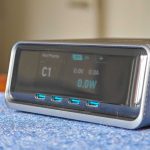Opening a U.S. bank account as a non-resident can be beneficial for various reasons, such as conducting business in the United States, receiving payments from U.S. clients, or managing your finances while studying or traveling in the country. However, the process of opening a bank account as a non-resident can be more challenging than it is for residents, and many banks require an in-person visit. Fortunately, some banks offer the option to open an account online, making it more convenient for non-residents.
It’s important to note that the requirements and process for opening a U.S. bank account online may vary depending on the bank and your specific circumstances. Some banks may have more stringent requirements or may not offer online account opening for non-residents at all. Therefore, it’s essential to research and compare different banks to find the one that best suits your needs.

In this guide, we will provide a general overview of the steps involved in opening a U.S. bank account for non-residents online, along with some important considerations and tips to help you navigate the process.
Step 1: Research and Choose a Bank
Start by researching banks that offer online account opening for non-residents. Some banks that may provide this service include:
- Wise (formerly TransferWise)
- Citibank
- HSBC
- Silicon Valley Bank
- First Republic Bank
Compare the account types, fees, minimum balance requirements, and services offered by each bank to find the one that best aligns with your needs.
Step 2: Gather Required Documentation
To open a U.S. bank account online as a non-resident, you’ll typically need to provide the following documents:
- Passport or other government-issued identification
- Proof of address, such as a utility bill or lease agreement
- Tax Identification Number (TIN), such as an Individual Taxpayer Identification Number (ITIN) or, if applicable, your country’s tax identification number
- Proof of income or employment, such as a pay stub or employment contract
- Initial deposit, which can vary depending on the bank and account type
Make sure to have digital copies of these documents ready before starting the application process.
Step 3: Complete the Online Application
Visit the chosen bank’s website and navigate to the account opening page for non-residents. Fill out the online application form with your personal information, contact details, and the required documentation.
Step 4: Verify Your Identity
The bank may require additional steps to verify your identity, such as a video call or submission of notarized documents. Follow the bank’s instructions to complete the verification process.
Step 5: Fund Your Account
Once your application is approved, you’ll need to make an initial deposit to activate your account. Follow the bank’s instructions for funding your account, which may include wire transfers or other methods.
Step 6: Manage Your Account
After your account is opened and funded, you can manage it online through the bank’s website or mobile app. You can check your balance, make transactions, and take advantage of the bank’s services.
Keep in mind that some banks may have limitations on the services available to non-resident account holders, such as restrictions on check writing or certain types of transactions. Be sure to familiarize yourself with your bank’s policies and any associated fees.
Opening a U.S. bank account online as a non-resident requires careful research and preparation. By choosing the right bank, gathering the necessary documents, and following the application process, you can successfully open an account and take advantage of the benefits it offers. Remember to maintain your account in good standing and comply with any reporting requirements, such as the Foreign Account Tax Compliance Act (FATCA), to avoid any legal or financial issues.










Add Comment